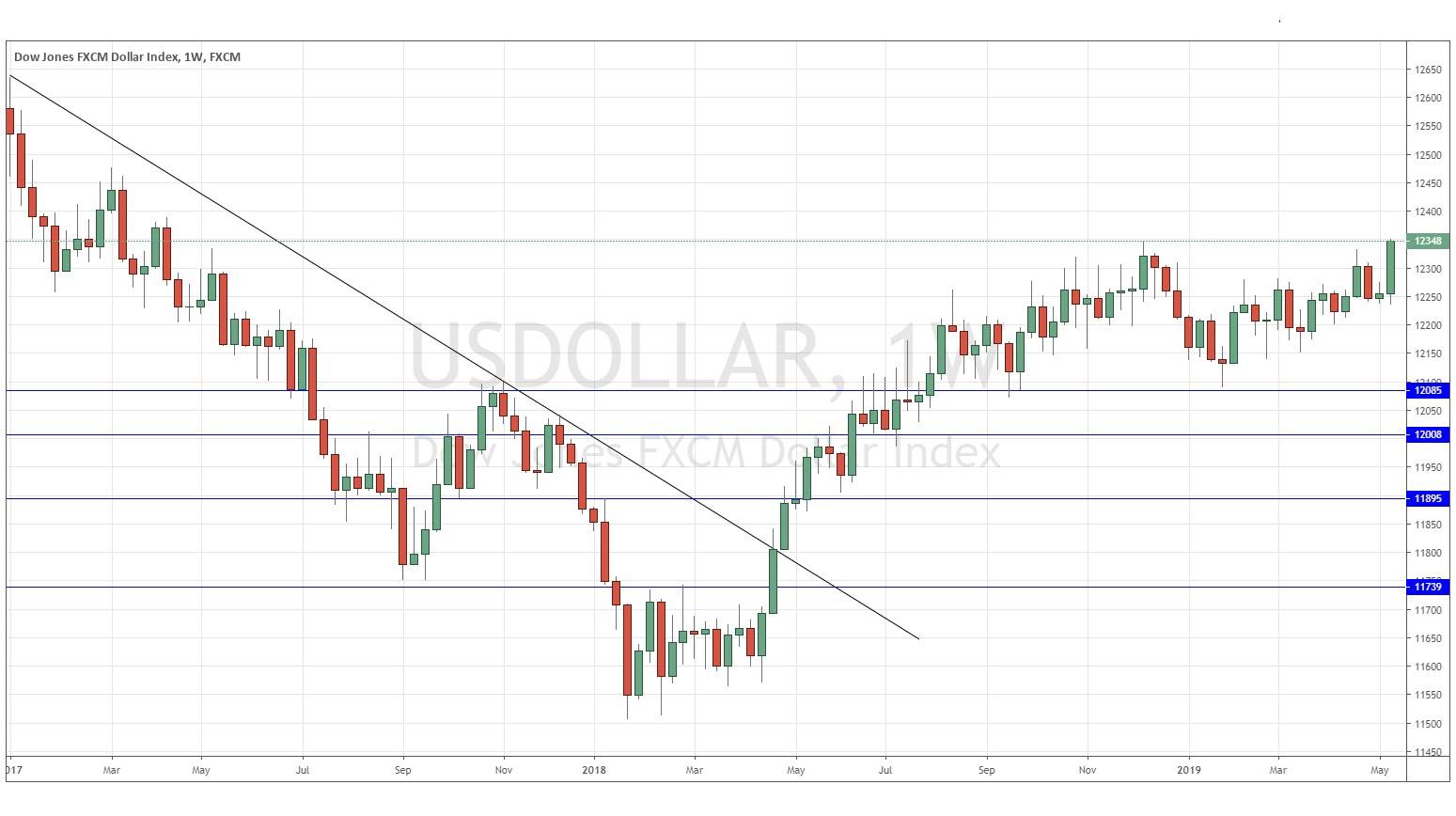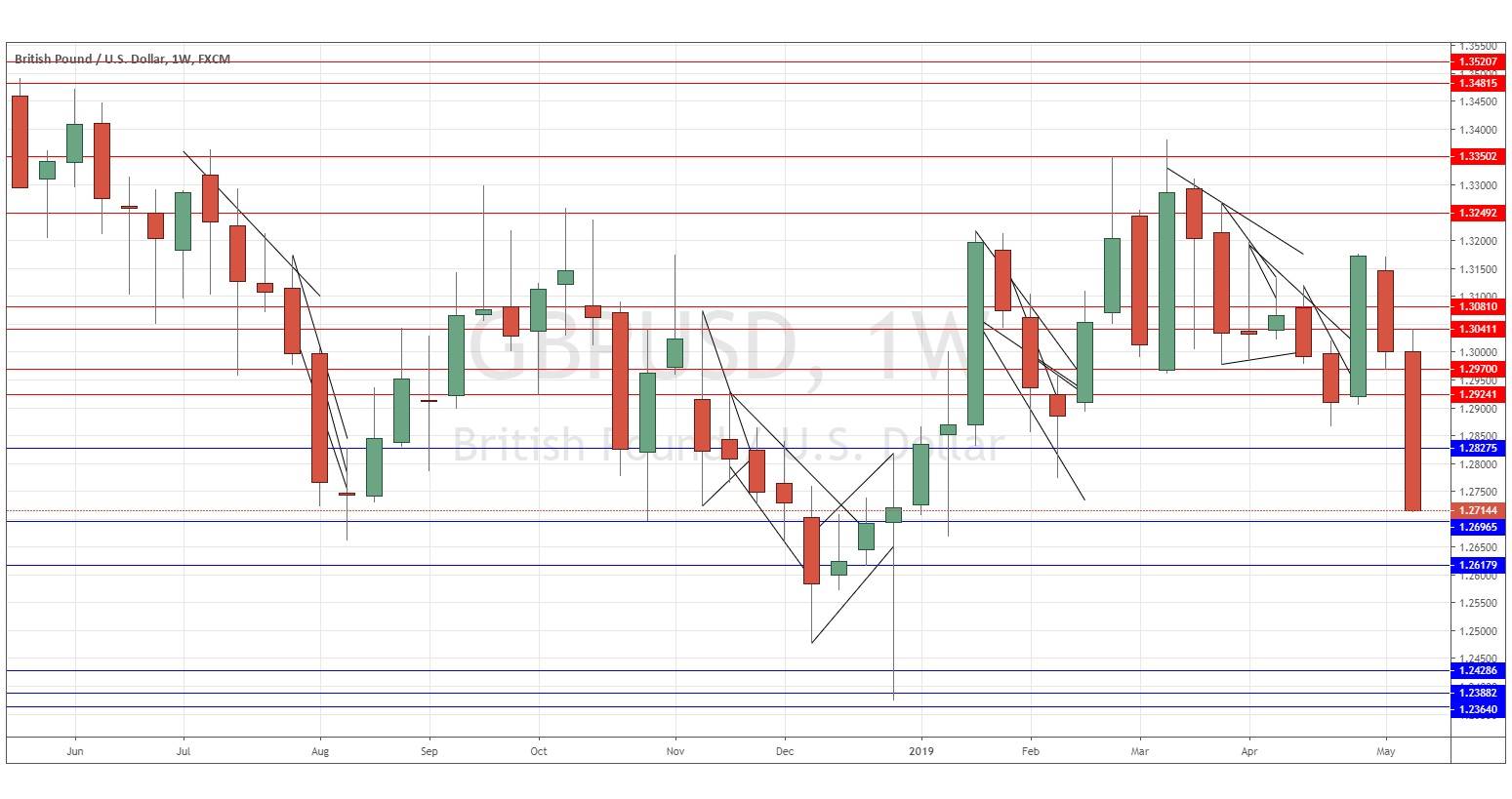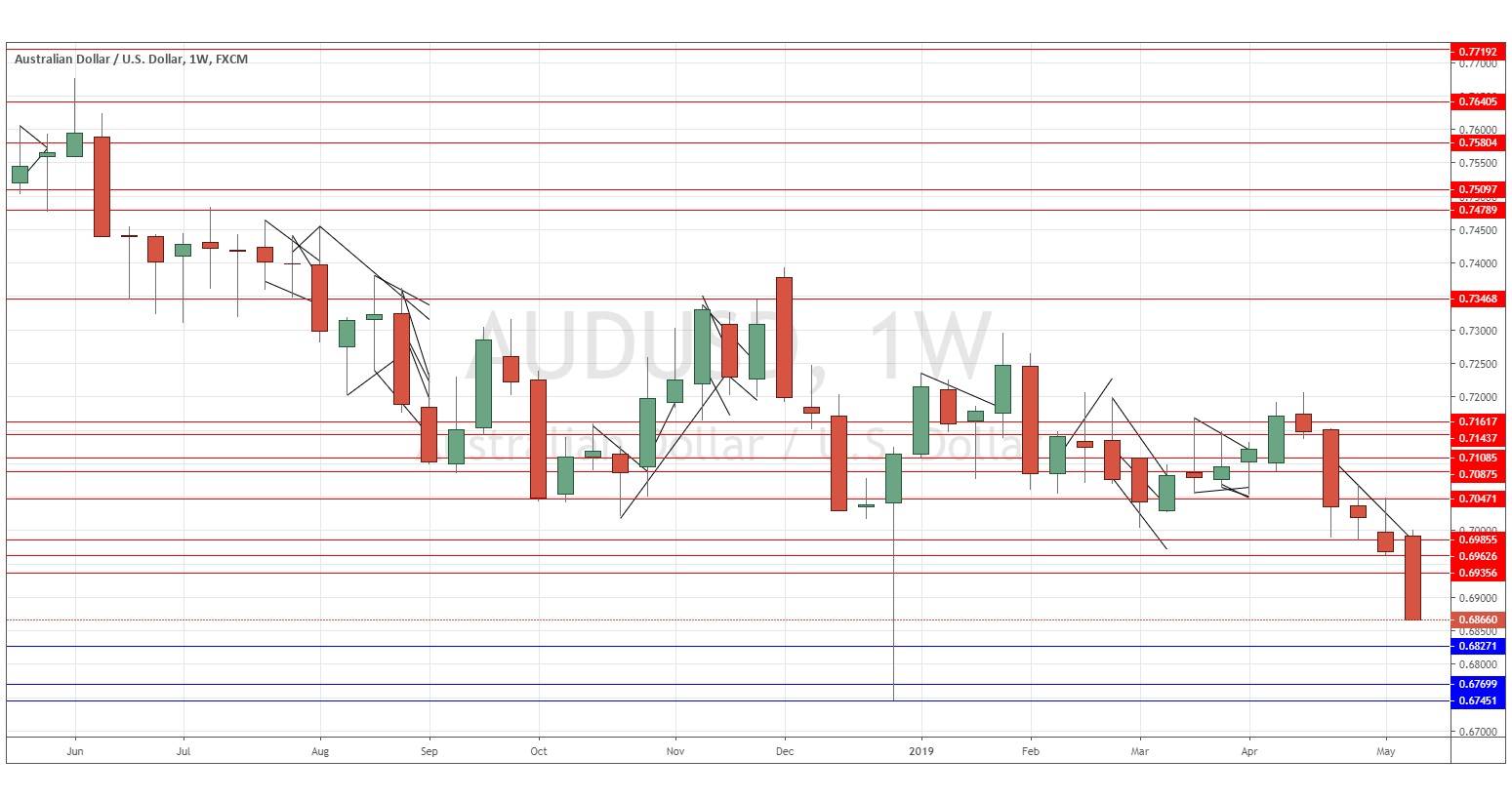The difference between success and failure in Forex trading is very likely to depend upon which currency pairs you choose to trade each week, and not on the exact trading methods you might use to determine trade entries and exits. Each week I am going to analyze fundamentals, sentiment and technical positions in order to determine which currency pairs are most likely to produce the easiest and most profitable trading opportunities over the next week. In some cases it will be trading the trend. In other cases it will be trading support and resistance levels during more ranging markets.
Big Picture 19th May 2019
In my previous piece last week, I forecasted that the best trades would be long USD/SEK and the S&P 500 Index above last week’s high prices if they were broken. Only USD/SEK broke last week’s high price, but it ended the week down from there by 0.27%. The week’s trades produced a very small averaged loss of 0.14%.
Last week’s Forex market saw the strongest rise in the relative value of the Swiss Franc, and the strongest fall in the relative value of the British Pound.
Last week’s market stayed in “risk off” mode as the U.S. and China continue to fail to resolve their trade dispute.
The Forex market has been livelier, with commodity currencies weak while safe-haven assets such as the U.S Dollar, Swiss Franc, Euro and the Japanese Yen all strengthened.
This week has a heavier news agenda with central bank input due for the U.S. and Australian Dollars. However, week in the Forex market will probably be dominated by news about the progress of the trade dispute between the U.S.A. and China.
Fundamental Analysis & Market Sentiment
Fundamental analysis has turned more bearish on the U.S. Dollar following the Federal Reserve’s more dovish approach to monetary policy and growth and weaker than expected inflation data. However, the economy is still growing relatively strongly although the stock market has been hit by the trade war with China.
Market sentiment is quite strongly risk-off and this seems likely to continue this week, with the safe-haven assets bid while the Australian and New Zealand Dollars and the British Pound look weak.
Technical Analysis
U.S. Dollar Index
The weekly price chart below shows that last week the USD Index printed a large and very bullish candlestick breaking out of a multi-month area of consolidation. The price closed right on its high and reached a new 2-year high price. The price is clearly up over 3 months and 6 months, indicating a bullish trend. Next week’s direction looks bullish.
GBP/USD
The weekly chart below shows last week saw this pair make its strongest open to close downward movement for many months, with the weekly candlestick closing right on its low and being of a relatively large size – these are bearish signs. The price is in a choppy but valid long-term downwards trend, below its levels from both three months ago and six months ago and falling with momentum. This pair is always liable to find support or resistance to halt such a move, but the odds favor lower prices over the course of the coming week.
AUD/USD
The weekly chart below shows last week saw this pair print a strongly bearish weekly candlestick closing right on its low and being of a relatively large size – these are bearish signs. The price is consistently declining long-term downwards trend, below its levels from both three months ago and six months ago and falling with momentum towards multi-year low prices. The odds favor lower prices over the course of the coming week.
Conclusion
This week I forecast the best trades will be short GBP/USD and short AUD/USD. I see AUD/USD as a slightly safer trade.




